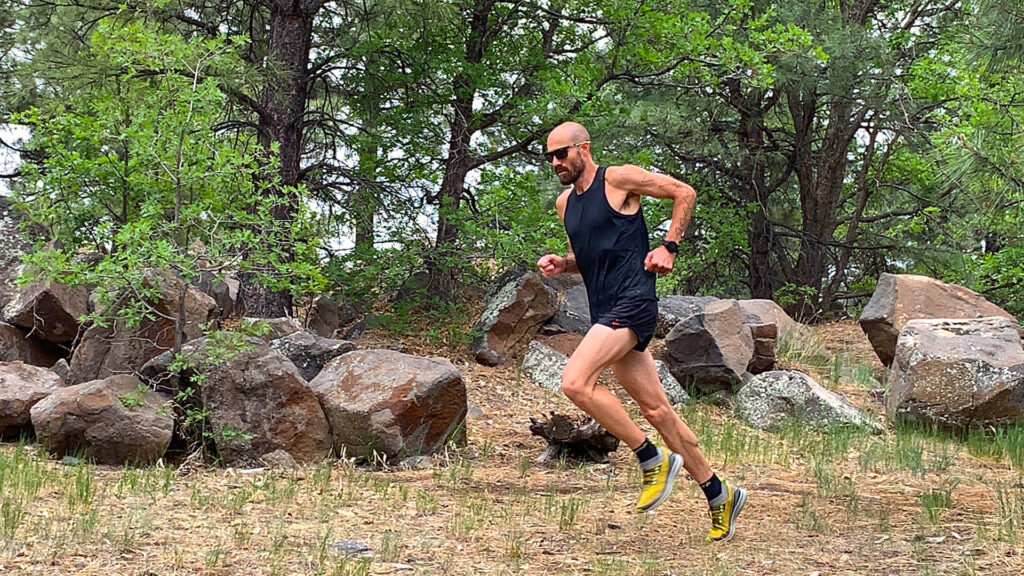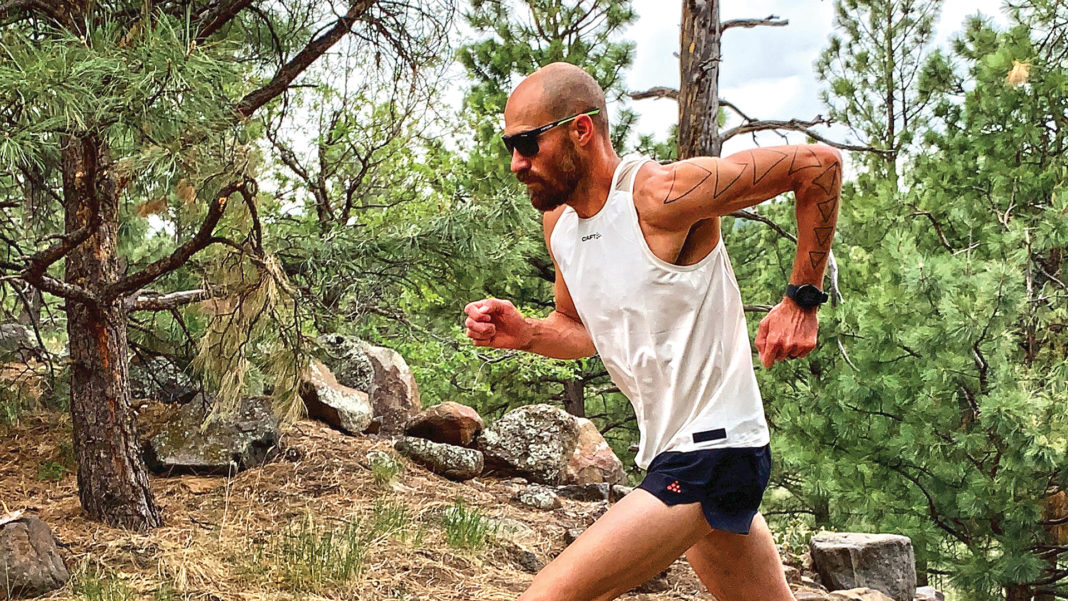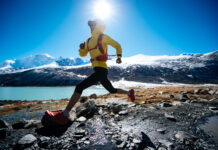Like most challenges, running an ultramarathon requires preparation. Preparation means more than simply running a lot. Adequate preparation should train both body and mind, increasing confidence and competence in your abilities to tackle the challenges ahead.
So, how can you prepare mentally and physically for an ultra? How can you increase your confidence and competence for the challenge before you? From the physical side of things, ultramarathons require stamina, strength, skill, suppleness, and sustenance.
Prepare your body and mind for the challenge ahead by preparing specifically for the myriad variables you’ll encounter in your ultra. Your training plan should be unique to you and your specific race. Here’s a few things to keep in mind when preparing for an ultra.
TRAINING CONSIDERATIONS
6 ‘S’ for success
Stamina
Many people obsess about the distance and the terrain of trail ultras and think that there is a magical number of kilometres that they must run per day, week, and on long runs in order to prepare adequately for the challenge. However, in most cases, the best plan is to get as fit as possible while staying as healthy as possible. You can increase your stamina by running consistently. Make running a regular part of your life.
Focus on incrementally increasing aerobic efforts on event-specific terrain. It is not necessary to run the entire distance of a race in training. Otherwise, what would make the race special? In the case of ultras 80 kilometres (50 miles) and above, it’s not even necessary to run more than ¾ of the race distance at any point in the build to your goal race. Otherwise, you greatly increase the likelihood of injury and disrupt training consistency which will more than likely lead you to arrive at the start line fatigued, broken, or over-trained. Gradually increase your weekly running volume and the duration of your long runs.
More stamina tips.
Specificity
When possible, do your easy and long runs on a surface similar to the surface of your goal race or challenge. Most races will have this information available.
Do your homework and learn about the terrain and elevation profile.
Based on the historical weather in the area at the time of the race or challenge and the terrain, start testing the gear that you plan to use for your race.
Find out what gear is required and recommended for the event and start practising with it.
What shoes will you wear? What socks? Shorts? Top? Will you wear or carry a jacket? Will you carry sleeves or gloves or a neck gaiter? Will you wear a hat or glasses? Will you layer your clothing?
Will there be drop bags and crew access points, or will you be required to carry everything for the duration of the event?
How much will the temperature and the weather fluctuate throughout the course of the race?
Sustenance
Find out what foods and fuels will be on course as well as the distances between aid stations.
Test the nutrition that will be on course on your long runs to determine what works for you and what you will be better off not consuming while racing. Remember we don’t want to try new things on race day, so training with nutrition that will be on the course is important so you know if it works for you, or not.
Based on the distances between aid stations and the time that you anticipate it taking for you to move from aid station to aid station, determine how much liquid and calories (along with other gear) that you’ll need to carry. How are you going to transport it: will you wear a pack, a belt, or use hand-held water bottles?
How much liquid will you need to carry between aid stations? What fuel sources do you want to carry to eat between aid stations? Will there be drop bags? Will you be able to ditch some of your gear and clothing and fuel at certain aid stations or be able to pick up more at another?
More information on how to fuel for an ultra.
Strength
You can increase your strength and durability by training on undulating terrain, strength training and cross-training. Ascending and descending hills prepares the legs for the challenges you’ll encounter on race day. Adding some lunges and functional strength work will help prepare the legs for the strain that they’ll experience in an ultra.
Additionally, cycling, hiking, swimming, and Nordic skiing will continue to build your aerobic base while reducing the impact between the ground and the body. Combined, these efforts will increase aerobic fitness and muscular endurance, reduce the risk of injury, and prepare the body and mind to tackle and ultra.
For more information about strength training as a means of injury prevention, please read about:
Speed
As odd as it sounds, despite the relative “slow” pace of most ultras, there is still a place for speed work in a well-rounded training program for an ultramarathon. The goal of speed work for ultrarunners is not so much to increase the VO2 max per se, but rather to maximize the running economy of the athlete–in other words, the efficiency with which an athlete moves.
You want to be able to maximize the speed at which you are able to move while minimizing the amount of effort required to do so. The more economical you learn to run, the lower the likelihood of injury and the more efficiently (faster with lower energy expenditure) you’ll be able to move from point to point.
More information on speed vs. stamina.
Suppleness
Ultramarathons require mental and physical flexibility. With increased training volume often comes increased tension so it’s important to decompress from time to time. This can be done through yoga, foam rolling, and stretching.

RACE DAY CONSIDERATIONS
You’ve done the hard work – the preparation and training – now it’s time to really think about the race. Not all races are created equal, so you’ll want to cater your race-day plan to your specific event.
Pacing
When it comes to race strategy, learn to run by feel. Many ultras are on trails which means that the terrain will likely vary and weather will change throughout the duration of the race. Aim to keep your effort at or below your first ventilatory threshold (6/10 on the scale of rate of perceived exertion) for most of the race as a means of keeping your heart rate at a sustainable rate.
Are pacers permitted? If they are, will you have someone to pace you for a portion of the run?
Specific Equipment
What time does the race start and when do you think you’ll finish? It could quite possibly be dark. How will you light the way? Will you wear a headlamp or a handheld light or both? When will you need it? Will you start with it and then stuff it in a pack or drop bag or will you need to pick one up from your crew or drop bag later in the race?
If you will need a light at some portion of the race or challenge, be sure to practise well in advance so that you are comfortable using the light(s) that you intend to use.
Are support crews permitted? If they are, will you make use of one of your own? They could provide you with additional food, gear or aid while on the course.
Fuel
Make fueling early and often the priority throughout the race so that you can prolong the onset of the inevitable bonk. This will allow you to use the fuel that you consume more efficiently.
Mental
From a mental standpoint, it’s important to minimize stress and tension. Hope for the best and prepare for the worst. Make a plan and plan to execute it, but also be equally prepared to scrap the plan and shoot from the hip. The ability to troubleshoot is key to success at ultrarunning. If you plan to have a crew or pacer, make sure that you surround yourself with those with the ability to troubleshoot and the ability to be flexible. The ability and confidence to troubleshoot often come from experience. This can come through racing as well as training by simulating race type circumstances.
For more information on training considerations, visit: www.peakrunperformance.com.
Read This Story in Our Outdoor Summer Digital Edition
Get outside and play!
We’ve covered DIY Bike Maintenance, Wildlife Travel, Open Water Swimming, Ultramarathon Training, Paddleboarding, Family Adventures, and Dogs and a Cat to watch on Instagram! Work out with Canada’s Top Fitness Instructors and be inspired by our Athletes with IMPACT.


















